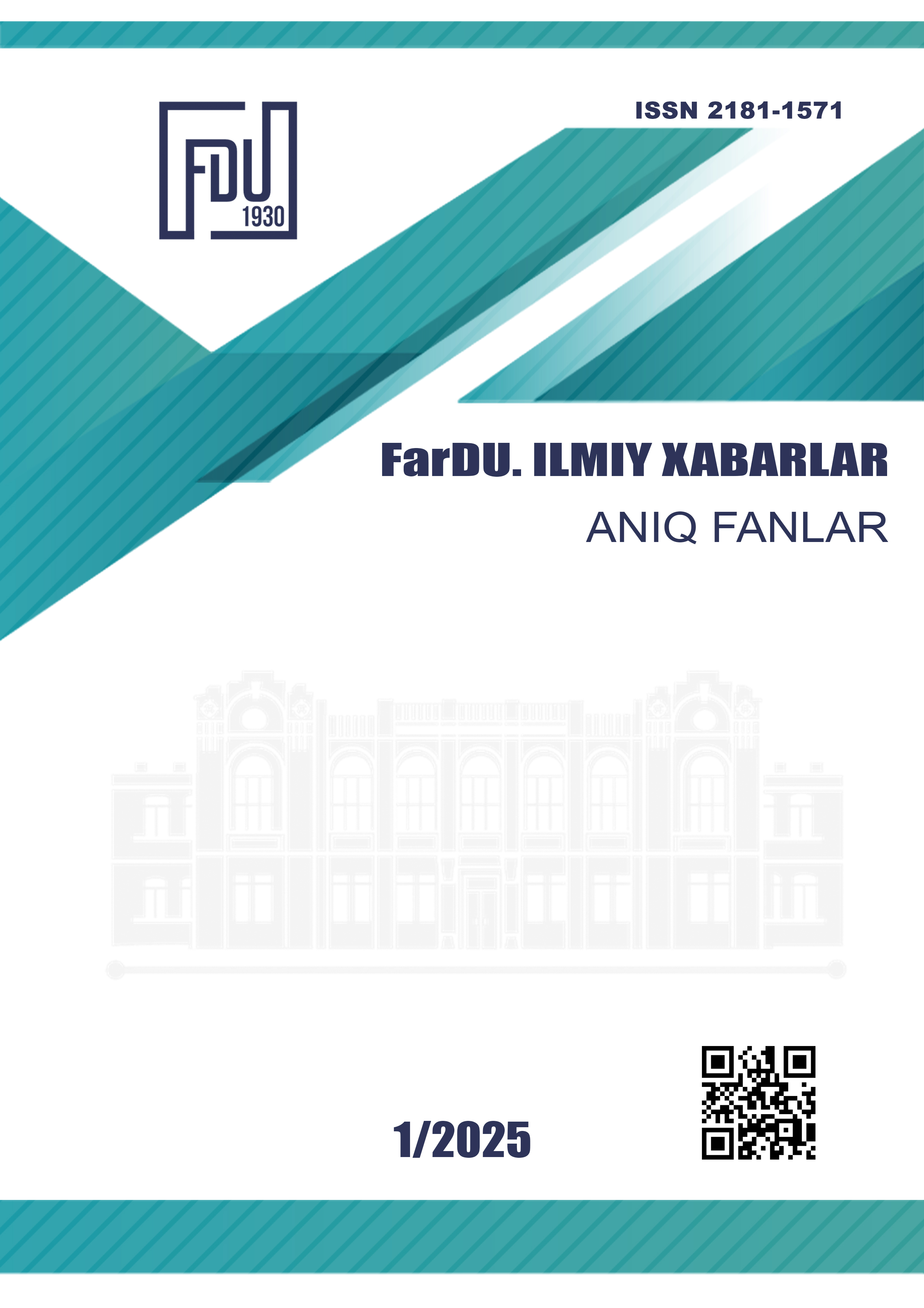RELATIONSHIP BETWEEN INTERNODE LENGTH, STEM NODE NUMBER AND EAR PRODUCTIVITY IN SOFT WHEAT VARIETIES
Keywords:
wheat, internodes, mineral nitrogen, productivity, yield, variety.Abstract
The article considers the relationship between the productivity elements of the Navruz and Atoi-85 wheat varieties at different seeding rates (100, 200 and 300 pcs/m2) and the use of mineral nitrogen at the rate of 200 kg/ha in the form of urea. It was revealed that the hydrothermal coefficient of the Gissar Valley of Tajikistan over the years of research (2008-2012) is at the level of GTC 0.26, which indicates an insufficient level of moisture in the territory. It was found that with an increase in the seeding rate, a significant change in the length of the productive straw, the length and weight of the ear is observed. When using mineral nitrogen, the ear weight of the Navruz variety increases from 1.64 to 3.4 g, and of the Atoi-85 variety from 2.0 to 3.25 g. Under the influence of environmental conditions, the number of stem nodes and their lengths change significantly.
References
Грабовец А.И., Фоменко М.А. Озимая пшеница. Монография. – Ростов-на-Дону, ООО «Издательство Юг», 2007. -600 с.
Доспехов Б.А. Методика полевого опыта. –М.: Агропромиздат, 1985. -351 с.
Лепехов С.Б. Выполненность соломины как важный фактор защиты пшеницы от хлебного пилильщика (Cephus pygmaeus L.) на Алтае // С. Б. Лепехов, В. А. Петин, М. В. Чебатарева // Труды по прикладной ботанике, генетике и селекции / Proceedings on applied botany, genetics and breeding. 2022; 183(1): 199-207.
Лукьяненко П.П. Озимая пшеница Безостая 1 // Селекция и семеноводство. 1961. – № 3. – C. 50-54.
Марченко Д.М. Взаимосвязи между урожайностью и элементами ее структуры у сортов мягкой озимой пшеницы // Научный журнал КубГАУ, №68(04), 2011.
Ремесло В.Н. Методы и результаты селекции зимостойких высокопродуктивных сортов озимой пшеницы // Методы и приемы повышения зимостойкости озимых зерновых культур (Тр. ВАСХНИЛ). – М.: Россельхозиздат, 1975. – С. 23-29.
Beres B.L., Cárcamo H.A., Weaver D.K., Dosdall L.M., Even den M.L., Hill B.D. et al. Integrating the building blocks of agronomy and biocontrol into an IPM strategy for wheat stem sawfly. Prairie Soils and Crops Journal. 2011; (4):54 65.
Dolmatova L.S. Biological peculiarities of pedicellate corn sawfly (Cephus pygmaeus L.) in the conditions of Altai Ob region. Vladimirskiy zemledelets = Vladimir Agriculturist. 2016; 4(78): 38-41. [in Russian] (Долматова Л.С. Биоло гические особенности стеблевого хлебного пилильщика (Сephus рygmaeus L.) в условиях Алтайского Приобья. Владимирский земледелец. 2016; 4(78): 38-41).
Farstad C.W., Jacobson L.A. Manual for sawfly control work ers in Alberta. Dominion Department of Agriculture – Science Service. Division of Entomology. Mimeographed Contribution 16. Ottawa: Dominion Department of Agri culture; 1945.
Holmes N.D. The effect of the wheat stem sawfly, Cephus cinc tus (Hymenoptera: Cephidae) on the yield and quality of wheat. The Canadian Entomologist. 1977; 109(12): 1591-1598. DOI: 10.4039/Ent1091591-12
Szczepaniec A., Glover K.D., Berzonsky W. Impact of solid and hollow varieties of winter and spring wheat on severity of wheat stem sawfly (Hymenoptera: Cephidae) infes tations and yield and quality of grain. Journal of Eco nomic Entomology. 2015; 108(5):2316-2323. DOI: 10.1093/ jee/tov207
Varella A.C., Weaver D.K., Cook J.P. Blake N.K., Hofland M.L., Lamb P.F. et al. Characterization of resistance to the wheat stem sawfly in spring wheat landrace accessions from targeted geographic regions of the world. Euphytica. 2017;213(7):153. DOI: 10.1007/s10681-017-1945-x
Downloads
Published
Issue
Section
License
Copyright (c) 2025 Scientific journal of the Fergana State University

This work is licensed under a Creative Commons Attribution-NonCommercial-NoDerivatives 4.0 International License.

